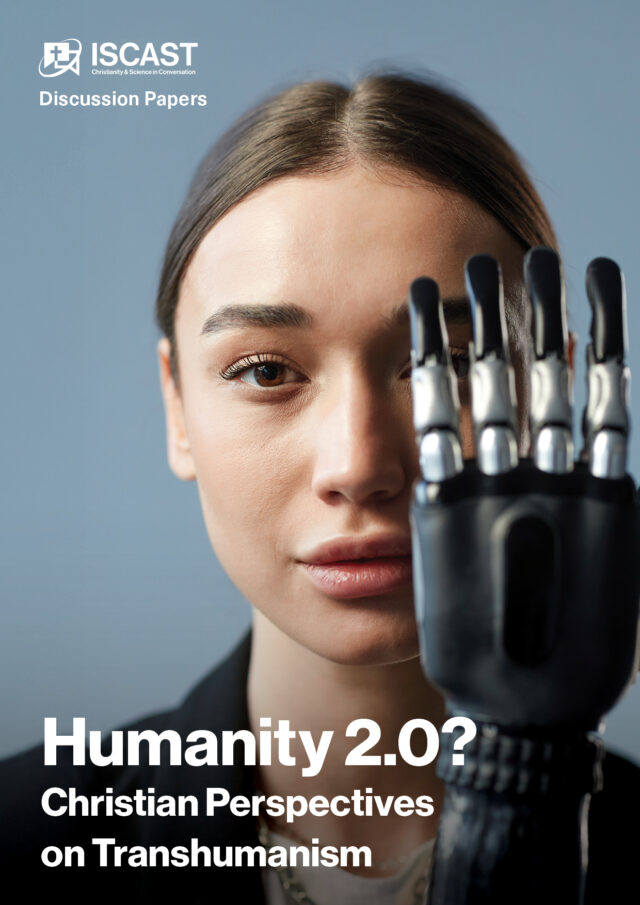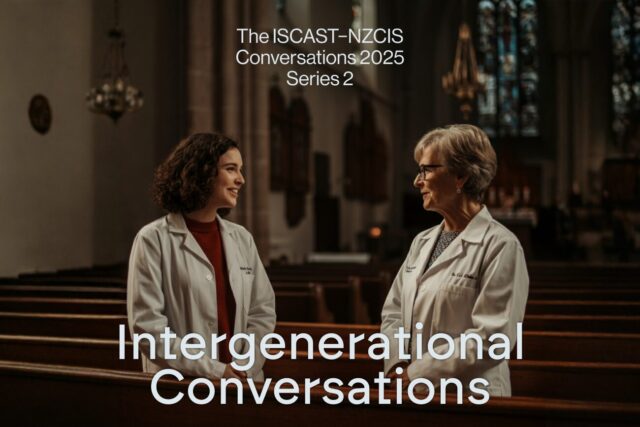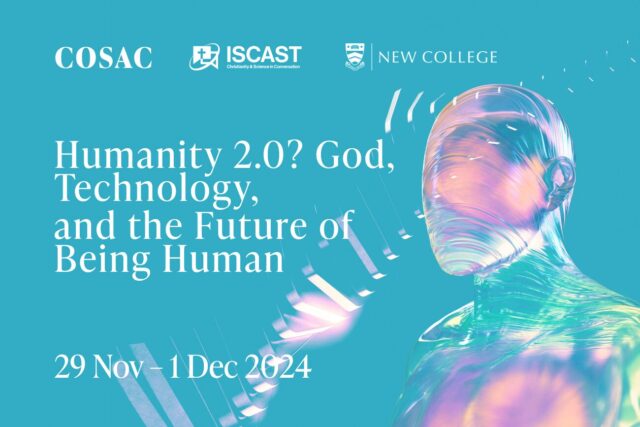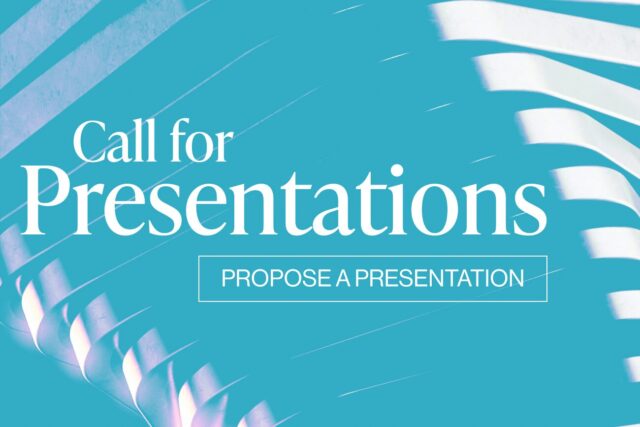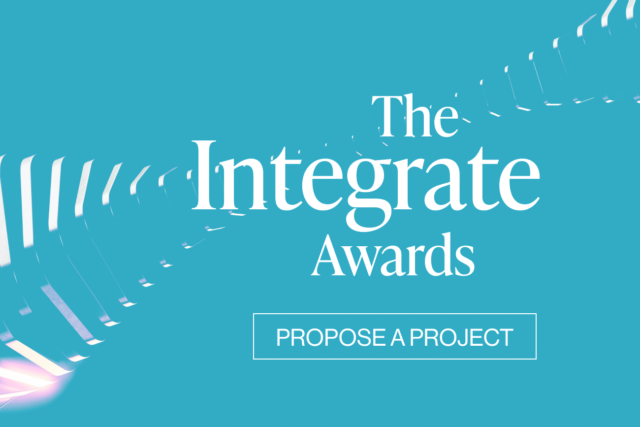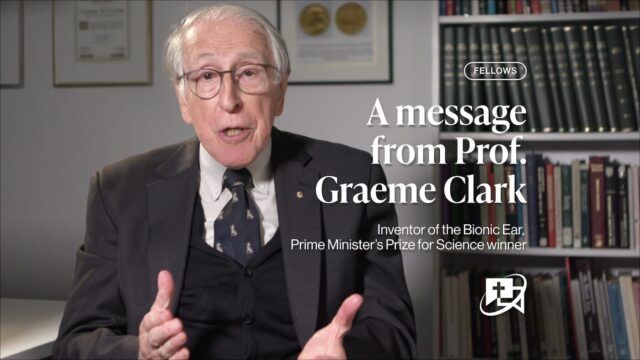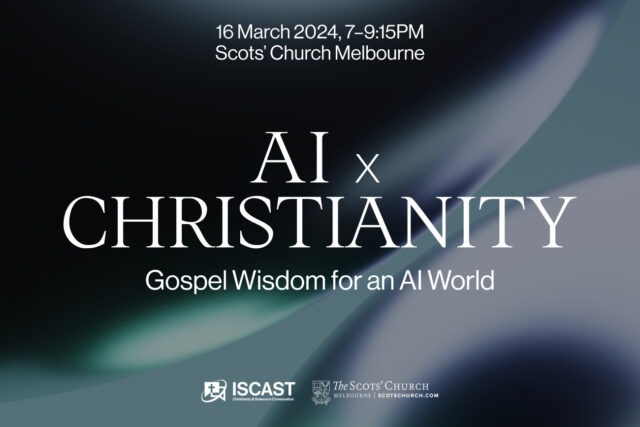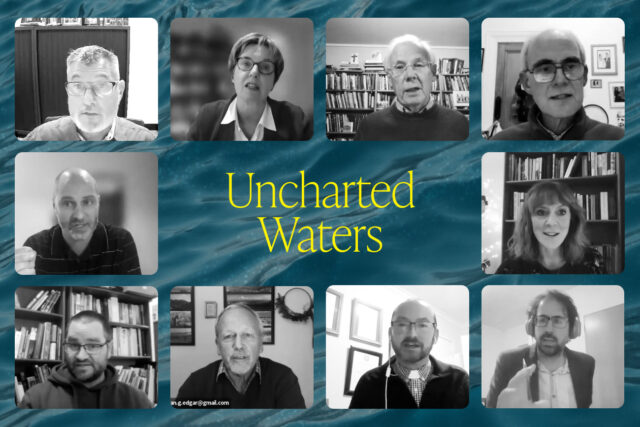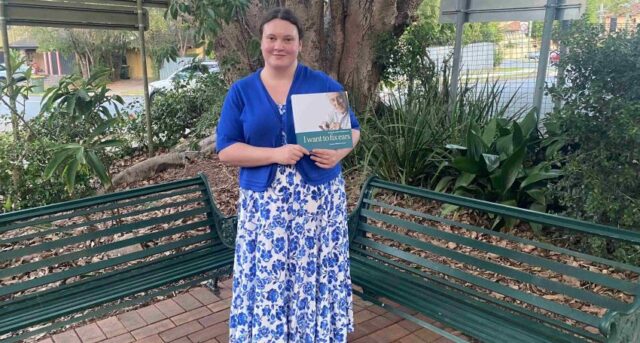

“Of Those To Whom Much is Given, Much Will be Required” Luke 12:48
John R Pilbrow
2007

ISCAST: “Of Those To Whom Much is Given, Much Will be Required” Luke 12:48
President’s Address: COSAC2007
John R Pilbrow
Download PDF
ISCAST: “Of Those To Whom Much is Given, Much Will be Required”
Luke 12:48
President’s Address: COSAC2007
John R Pilbrow
President, ISCAST
Emeritus Professor of Physics, Monash University
Abstract:
This lecture will firstly provide a brief historical overview of the science-faith landscape covering the last 50 years or so and, secondly, an assessment of the particular contribution of the scientist-theologians whose writings have presented a challenge to Christian thought and theology during that time. A number of key issues arising from the science-faith dialogue that need to be addressed to both church and community in the 21st Century will be highlighted. In the light of this, the words of Jesus, “To whom much is given, much will be required”, challenge us to consider the privileged position those of us who are Christians and also scientists occupy and how we can best bring our knowledge to bear on the life of the church today. Finally, there will be some specific challenges for ISCAST.
TABLE OF CONTENTS
Abstract:. 1
1 INTRODUCTION – Personal. 3
2 BACKGROUND TO ISCAST.. 4
3 THE SCIENCE-FAITH LANDSCAPE.. 5
3.1 Brief History.. 5
3.2 Science-Theology/Science-Faith.. 6
4 SOME SCIENCE-FAITH ISSUES FOR THE 21ST CENTURY.. 6
4.1 Hermeneutics. 6
4.2 Philosophy of Science.. 7
4.3 Technology.. 7
4.4 Creation Theology.. 7
4.5 Evolution & The History of Life on Earth.. 8
4.6 In The Image of God.. 9
4.7 Providence, Theodicy & God’s Action.. 9
4.8 Medicine – Cloning, Stem Cells & The Human Genome.. 9
4.9 Ecology & Sustainablility.. 9
4.10 Anthropic principle[s]. 10
5 PRIVILEGE & RESPONSIBILITY.. 10
5.1 Interaction with the Churches. 10
5.2 Website.. 12
5.3 COSAC2007 AND BEYOND: Reaching out in depth.. 12
6 CONCLUSION… 12
1 INTRODUCTION – Personal
My interest in the kinds of questions under consideration at this conference goes back almost 50 years. I don’t think I would ever have called myself an atheist but it was not until my third undergraduate year that I made an adult commitment to Christ and the journey of which tonight’s presentation is part, began soon after that. Since then I have sought to follow and serve Jesus Christ as the Lord of my life within an orthodox understanding of Christianity, including, e.g, belief in the incarnation and the resurrection of Jesus.
During my honours year I discovered Mere Christianity by CS Lewis, The Christian View of Science and Scripture by Bernard Ramm, and Science and Christian Belief by Charles Coulson. Ramm’s book was a watershed for evangelical Christians for it exposed the weakness in much of the interpretation of the early chapters of Genesis prevalent at that time. Although Ramm did not go so far as to embrace evolution, his book opened a door for those of us who did. Coulson’s Science and Christian Belief opened my eyes to how a practicing and very distinguished scientist was able to articulate a coherent understanding of science within his Christian faith. In different ways, these three books provided a window into a more intellectual reflection on the faith to complement my growing familiarity with scripture. Since reference was made this morning to 1 Corinthians chapter 1, I have recalled spending a day around that time meditating on verses 18-25, particularly the contrast between God’s wisdom and ours. It was an important internal debate for me as to whether to continue in science or go in some other direction such as ordination.
Then in 1960 I attended a lecture by noted Cambridge Paleontologist, Martin Rudwick, who was on sabbatical in NZ. I don’t remember the details, but I remember feeling encouraged that here was a Christian who was also a notable Scientist in his field.
On proceeding to Oxford in 1961 I was soon introduced to the Oxford Research Scientists; Christian Fellowship [RSCF] group that included John [now Sir John] Houghton and which met in the rooms of our former ISCAST President, John White, at Lincoln College. From 1965-78 I was part of an active RSCF group in Melbourne and since 1992 have been part of ISCAST.
I have to say that all of these experiences and involvements helped me maintain my professional and intellectual sanity while working in a mainstream Australian University. Furthermore, they nurtured my understanding of faith in the light of modern science that from time to time I have been able to share with church and campus groups.
Over the years I have also thought a great deal about my scientific vocation and the need to integrate the views of the world one obtains from both science and faith perspectives. There is a common misconception that when we peer through our telescopes or down our microscopes, or whatever it is we do as scientists, we are thought to be mainly looking for evidence for the existence of God – what we would call Natural Theology. My own understanding is that we operate from a Christian faith position that recognizes the world [i.e the universe] as possessing an appropriate level of God-ordained order. Part of the Genesis mandate, at least, is that we have not only the freedom, but also the responsibility, to seek to understand this very universe in which we find ourselves. Put another way, one works within the framework best called a Theology of Nature. While the patterns and regularities we find can be occasions for awe and wonder, we don’t put God into our scientific explanations or into our equations.
During flights to the UK and in the USA last month, I had a number of very interesting conversations. An 18 year-old Dutch physics student began by telling me that he was reading books by Richard Dawkins and he remarked that of course “all scientists are atheists!” Fortunately I was carrying The Dawkins Delusion [by Professor McGrath and his wife] and his Twilight of Atheism, in preparation for a talk to University Chaplains! The young man’s jaw dropped. Then I pointed out that very high profile scientists such as Sir John Houghton, founding co-Chair of Assessement for the International Panel on Climate Change [IPCC], and Dr Francis Collins, Director of the Human Genome Project in the USA, are Christians!
I encountered a similar response from a corporate lawyer from Washington DC and the Dean of Fine Arts from a large US State University – “but surely how could you be a scientist and a Christian”? It is a privilege to be part of an organization such as ISCAST where one can tease out responses to the sorts of comments I received and to be able to have something significant to say in return.
2 BACKGROUND TO ISCAST
On becoming President of ISCAST last year, I resolved to visit Fellows and Associates in Adelaide, Canberra, Melbourne, Sydney and Brisbane. The resulting Discussion Paper, in which I reflected back what I had learned from our membership, will be discussed at the Fellows’ Meeting tomorrow afternoon. Much of what I wish to share with you tonight is based on the Discussion Paper.
My goal is to challenge us all, whether members of ISCAST or not, to think about how to convey what we have learned from modern science in appropriate ways into our everyday Christian journey.
ISCAST, established in 1988, is an association committed to a biblical theological perspective and whose members take for granted the need for discussion and dialogue not only in the science-faith area but in all areas of human enquiry. The foundational statement that defines what ISCAST is and its broad role is Clause 4 of the Memorandum of Association:-
4. In view of the need firstly to integrate the views of the world, as revealed in the Holy Scripture, with discovery, and, secondly to foster the responsible use of knowledge and technology for right and proper purposes, therefore, the additional objects for which the Organization is established are:‑
(a) To establish maintain conduct and promote an Institute for the Study of Christianity in an Age of Science and Technology (i.e. ISCAST);
(b) To promote encourage and extend an understanding of the world which takes into account the principles of the Christian faith;
There is thus much scope for broad areas for debate and dialogue. Indeed, within ISCAST we treasure the freedom we have to discuss a wide range of issues and ideas.
ISCAST has come a long way since its foundation. Biennial Conferences on Science and Christianity [COSAC] such as this are now well-established. The Website is well-regarded and much used. It now includes the ISCAST On-Line Journal. The Bulletin has served to provide a national identity. Annual ISCAST Lectures in Melbourne, Sydney and Brisbane are assuming increasing importance. Meetings of Chapters in Melbourne, Sydney and Brisbane provide on-going discussion and dialogue amongst members and supporters that encourages us to reflect deeply on our professional lives in the light of our faith.
Since, after almost 20 years, as we look to the future, it is a good time to acknowledge those who founded ISCAST as well as those who have kept it going. These include Professor Lawrie Lyons, the Founder of ISCAST; Board Members, particularly Professor John White President from 1992-2006 and A/Prof Robert Stening, Secretary/Treasurer for a similar period; Chapter Committees in Melbourne, Sydney and Brisbane; COSAC organizers; The Communications Working Group that overseas ISCAST publications; Bulletin Editors; those who developed and manage the Website and, the Editor and Associate Editors for the On-Line Journal.
Those of us in ISCAST have benefited enormously from lectures and conference presentations over the last 14 years by John Polkinghorne, John Bryant, Colin Russell, Sir John Houghton, Bob Russell, Sam Berry, Owen Gingerich, George Ellis, Darrel Falk and now Professor McGrath. Each one of these has challenged us to think outside our comfort zones and not to shie away from hard issues.
It is reassuring that ISCAST has counterparts in other parts of the world. These include, Christians in Science [CiS] in the UK and the American Scientific Affiliation [ASA] in the USA. Last March, I met with key representatives of Christians in Science [CiS], the Faraday Institute in Cambridge and also the Ian Ramsey Centre in Oxford. These organisations provide different models for operating in the science-faith interface and merit consideration as we think about future directions for ISCAST.
Christians in Science hold annual conferences and publish the journal Science and Christian Belief. Last month, I attended this year’s conference, jointly sponsored by the American Scientific Affiliation. Professor McGrath presented the keynote address entitled New Frontiers in Science and Faith.
The Faraday Institute, established at the beginning of 2006 with a two million dollar grant from the John Templeton Foundation, runs weekend courses and one or two week summer courses for particular audiences. I was privileged to be one of the presenters at Course #5 for secondary school teachers last March.
The Ian Ramsey Centre in Oxford has a different purpose, undertaking long-term research projects, all of which so far have been financed by the Templeton Foundation.
Those of us in ISCAST, along with our colleagues in similar organizations around the world, believe that we have a perspective on science-faith issues that needs to be brought to the attention of both church and community. Our task is to develop a bridge between the best science and the best up-to-date theology. To achieve this we shall need to identify suitable resources already available, but also look to the preparation of particular materials that may be particularly relevant to the Australian context. There is undeniably a vast literature now in the science-faith arena that provides a major source of materials that we shall need to use. It will also be necessary to unpack the more scholarly presentations at a variety of different levels.
In short, I believe organizations such as ISCAST exist in order to provide a bridge between the world of science and the church and community. However, after almost 20 years, ISCAST faces a challenge. Should ISCAST maintain the status quo or, alternatively, chart some new directions?
3 THE SCIENCE-FAITH LANDSCAPE
3.1 Brief History
When I was a student in the late 1950’s, those of us who studied physics were aware that Einstein’s relativity challenged our understanding of space and time and matter and energy. At a different level, quantum mechanics challenged our fundamental views of the nature of the physical world. Such insights were limited mainly to those with backgrounds in mathematics and physics and had made little or no impact on the wider world and, almost no impact on thinking within the churches.
Big Bang Cosmology was still competing with Steady State theories. However the discovery of the microwave background radiation from the early universe in 1964 was a critical experimental confirmation that Big Bang Cosmology is our best picture of the evolution of the universe. Biological Evolution was long established, the structure of DNA was known, the genetic code was about to be discovered, the genetic revolution was about 15 years away and Chaos Theory was about to be discovered.
The world of classical physics, still relevant when one drives a car or rides in an aeroplane, is what we call deterministic. That is the laws of classical physics are seen to determine the behaviour of the objects in our world. The world seen from the vantage point of quantum mechanics turns out to be somewhat shadowy. There is the well-known Heisenberg uncertainty principle that tells us that if we know where an electron is we know nothing about how fast it may be going and vice versa. Chaos theory from classical physics provides another challenge to us as we think about how the world actually works. Complexity theory and emergent complexity also add a dimension to the science-faith agenda. Modern theologians, including many of the scientist theologians, talk these days in terms of the universe of being open to the future. These considerations naturally raise the question as to what we may be able to say about God’s foreknowledge.
We recognise that new paradigms and vistas from 19th Century science to the present cannot all be discussed with the tools of yesteryear. The biological and cosmological landscapes have changed immeasurably and as such have forced on us the need to think deeply about what we mean by creation and how we should read and understand scripture.
3.2 Science-Theology/Science-Faith
In the 40 years since the publication of Issues in Science and Religion by Ian Barbour, there has been a massive growth in the number of scientists and scientist-theologians, particularly, who have done a great deal to address the impact of modern scientific paradigms on theology. The healthy debate to they contribute is evidence that the dialogue is necessarily on-going. Many of the questions posed and issues faced do not have simple answers. This is true of science itself where theories and levels of understanding are often tentative and capable of being improved upon or even replaced. This is even more so in the science-faith area.
I have already referred to the very extensive literature that now exists – many hundreds, if not thousands, of books on science-faith issues.
The science-faith landscape looks rather different from what I understood almost 50 years ago as an undergraduate. The emphasis then was more about demonstrating the reasonableness of faith. That remains important for our apologetics, of course. Nowadays, there is more investigation of the extent to which insights from modern science might assist us in probing the divine agenda.
4 SOME SCIENCE-FAITH ISSUES FOR THE 21ST CENTURY
I will now give a quick tour through several topics that were identified during the ISCAST brainstorming process last year. They are not in any particular priority order and the list is certainly not exhaustive. Every one of the topics is covered by an extensive literature. The ISCAST Website contains articles covering a good many of these topics, in those areas which lie within the expertise of particular ISCAST members. I hope this will convey to you good idea as to the sorts of things we in ISCAST think, talk and write about.
4.1 Hermeneutics
Of fundamental importance is how we read and interpret the Bible in the light of modern science. A scientific revolution has taken place during the past 150 years. Many of the reactions and responses in our own day mirror what happened in the past e.g. during the Copernican revolution. People do not like having their views disturbed! However, we cannot ignore the contemporary cosmological and scientific landscape when we reflect on and talk about our faith.[1]. It is essential that when we interpret scripture we understand the literary form of the text, its purpose when written, its universal message and recognize that scripture and science cannot ultimately disagree about the same realities.[2],[3],The lecture, now launched as the little book Genesis 1-3: Science? History? Theology? Thursday night has been a most helpful contribution to those of us in the Australian scene for about 40 years.
4.2 Philosophy of Science
While everyone acknowledged that science works extremely well, there was a call for an on-going critique of scientific methodology, naturalism and reductionism. This can only be achieved by means of a well-thought out and defendable view of knowledge [or epistemology] including the need to lay bare our presuppositions. Professor McGrath covered many points in this area this morning.
In this context we also need to consider the basis for believing science to be a legitimate human activity.
4.3 Technology
ISCAST is the Institute for the Study of Christianity in an Age of Science and Technology. Thus exploration of technological issues in the light of Christian teaching and understanding of the world is intrinsic to its purpose. While technological advances are to be welcomed, we in ISCAST realize we have a responsibility to critique consequential social issues. To me it is paradoxical that there are those today who want the benefits of science and technology while at the same time opposing the very science that has makes modern technology possible – when they consider it conflicts with their beliefs.
4.4 Creation Theology[4]
As Christians we know that we belong to an amazing creation. Part of our task is to represent the best scholarship in Creation Theology from those who have brought their thinking into the 21st Century. Terms such as creation, intelligent and intelligence have been sufficiently hijacked that when we use them we can be considerably misunderstood. Creation Theology is after all about the fact of existence, not about scientific views as to how it all happened.
There are many hymns going back several centuries with references to creation that tell us a good deal about the dominant scientific paradigms of the periods in which they were written. Sometimes in church, I find I am automatically re-interpreting references to creation in terms of my understanding of modern science – in order to be able to sing particular stanzas at all. It would be a worthwhile to critique such hymns in the light of modern science, much has been done for hymns that refer to time and eternity by Bishop Antje Jackelen in her book Time & Eternity:The Question of Time in Church, Science and Theolog[5]y. The English hymns were from the Australian Hymn Book and the Australian Hymn Book with Catholic Supplement!
I have already hinted that our task is more to pursue a Theology of Nature [recognizing that it is God’s world and that we have the responsibility and opportunity to understand a good deal about it] rather than to go down the path of Natural Theology [trying to find evidence for God in what we discover].
4.5 Evolution & The History of Life on Earth
We are aware that in many Christian circles, people take extreme views on subjects such as evolution and intelligent design[6],[7]. We concluded last year that there is no escape from maintaining a watching brief for a good while to come and to be ready to provide appropriate responses, even though many of us want to move on to other important issues The booklets[8] prepared by Drs Graeme Finlay and Donald Neild in NZ are examples of what can be done to provide helpful resources to counter the misinformation which exists in many places[9].
Related questions concern how we understand design in nature, nature versus nurture and evolutionary development.
The term ‘theistic evolution’[10] is often used by Christian writers when speaking about evolution. However, in a recent article in Theology and Science 5 [2] 151-65 (2007), Bishop Jackelen[11] urges us to speak of a ‘Theology of Evolution’ since she claims, ‘Theistic Evolution’ seems to imply ‘that a theory or the natural process it describes can be theistic or atheistic”. In this context I don’t see anyone ever suggesting ‘theistic quantum mechanics’ or ‘theistic mathematics’ and nor would I support that.
We must be concerned for students at high school and in 1st year university, particularly, who come from backgrounds where evolution and much else of modern science is opposed on the grounds that it conflicts with scripture. Regrettably such students come ill-equipped to pursue a credible career in biological or behavioural sciences while clinging to the particular Christian position they have inherited. It must mean that those who have taught these young people to pitch the bible against the best science have simply not done their homework. It is no wonder some lose their faith at university. It is grossly unfair and irresponsible to load such a burden on young people.
I recall enrolling a very gifted student in an accelerated program at my university. First of all she chose Biology 101 as one of her subjects, but came back a few minutes later having changed her mind, saying “It might conflict with my faith”. My colleague, also a Christian, and I agreed that it was sad endightment of the teaching she had received at a church in a country town – no doubt well-meaning but nevertheless misguided.
4.6 In The Image of God
Modern developments in the neurosciences in general and in the mind-brain problem, in particular, point to a holistic understanding of the nature of the human person[12],[13]. This is a call to rethink what if means to be human and to bear God’s image particularly in the light of long teaching in the Christian tradition of body-soul dualism and even body-soul-spirit trichotomism. Whatever our conclusion, salvation must involve the whole person, not just of some entity such as the soul.
4.7 Providence, Theodicy & God’s Action
In practical terms we all have a stake in how we understand God’s interaction with and involvement in the world through both General and Special Providence and in response to our prayers. The 2004 Tsunami particularly highlighted the need for clear thinking regarding this and other natural disasters within a general consideration of Theodicy[14].
From 1991 to 2002 an extensive exploration of Divine Action in the light of modern science took place, co-sponsored by the Vatican Observatory [VO] and the Center for Theology & the Natural Sciences [CTNS] in Berkeley. Topics covered included Quantum Cosmology, Chaos Theory, Evolution, Neuroscience and Quantum Mechanics. The goal was to see what insights from modern physics, in particular, might illuminate our understanding of divine action. There was particular emphasis on a non-interventionist understanding of God’s actions, consistent with the kind of world that I described earlier which is believed to exhibit genuine openness. So far as I am aware, nothing on this scale has ever been previously attempted. The 100 or so chapters that comprise the five volumes, Scientific Perspectives on Divine Action[15], provide scholars and the general reader with a resource that is unmatched anywhere on the topic. The introductory chapters written by Bob Russell [Vols 1-3 & 5] and Nancey Murphy [Vol 4], are important summaries of the main findings and are valuable scholarly contributions in their own right.
4.8 Medicine – Cloning, Stem Cells & The Human Genome
The possibilities regarding cloning and stem cell research from the late 1990’s continue to raise scientific and ethical issues that will be around for a long time to come[16]. We in ISCAST are indebted to Prof John White for keeping us informed regarding Cloning and Stem Cell research as the Academy Spokesperson on these issues. ISCAST Fellow, Dr Brian Edgar, is serving a second term on the National Gene Ethics Committee.
4.9 Ecology & Sustainablility[17].
The growing awareness concerning the environment, global warming and deforestation challenges us as Christians to articulate our role as responsible stewards of the earth. In ISCAST we have considerable expertise in these areas. Recently Dr Brian Edgar, from a theology and ethics perspective and Mick Pope, from that of a professional meteorologist and informed Christian, made a presentation on Climate Change: Problems and Opportunities to the Synod of the Anglican Church of Tasmania as a result of a specific request to ISCAST for speakers on the topic.
4.10 Anthropic principle[s]
Anthropic principles refer to the fine tuning of the universe seen in the precise conditions that apply to the known laws of nature and which appear to make life in our universe not only possible but inevitable. Anthropic Principles do not, of themselves, provide the basis for knock-down proofs that God exists, but serve as a reminder that our universe is rather special[18]. During his recent lecture at the Christians in Science/American Scientific Affiliation [CiS/ASA] conference in Edinburgh, Professor McGrath suggested using the term Biocentric instead of Anthropic as the latter unfortunately focuses rather too much on humanity and not enough on the whole of creation. This morning, Professor McGrath outlined this area in some depth.
5 PRIVILEGE & RESPONSIBILITY.
Over the years, those of us in ISCAST, and like-minded colleagues in similar organizations, have sought to reflect deeply on the impact of modern science on our Christian faith. In today’s world this puts us in a very privileged position because we can see the issues from both perspectives – that of our science and also our faith. Without doubt we will continue to find our professional journeys sustained and nourished through conferences such as this, through regular meeting together, and through lectures such as many of us experienced on Thursday night. We face the challenge first of all to recognize opportunities to inform both church and community. Secondly we have an on-going responsibility to continue to critique the kinds of issues I have just raised. Thirdly we must be outward looking and resourceful as we look for opportunities to provide help, encouragement and resources to the church and community.
In Edinburgh, Professor McGrath challenged us to do all we can as we have opportunity. So where do I think some of these opportunities lie for us in Australia?
5.1 Interaction with the Churches
There is considerable potential for us, individually, and corporately as ISCAST, to interact with e.g. Church Leaders, Clergy, Youth Leaders, University Chaplains[19], School Chaplains and Christian Schools and to invite them to engage in dialogue in the area of science and faith. ISCAST can certainly provide speakers who are well able to present a positive picture of the relationship between modern science and Christian faith and who understand the broader intellectual landscape[20]. We shall need to be pro-active as many of the above may simply not know we exist.
Further, there is scope to develop resources for teachers at primary and secondary level, for clergy, children and youth workers in churches, and for children and parents for use at home. While preparation of new materials will require involvement of experienced educators, part of what is needed can be achieved by making existing literature more accessible and use of the website for up-to-date reading lists.
One suggestion made during last year’s brainstorming was that we should consider developing materials on the Website or in hard-copy format at thee levels.
· Senior Scientist/Theologian – scholarly level e.g. at the level of our ‘On-Line’ Journal
· Level of U/g and P/G students
· High School & Lay Level Resources for congregations.
There is a great need to nurture relationships with Theological Colleges & Bible Colleges[21], to encourage and help them to include discussion of science-faith issues and perspectives within their programs. Options might seminars, courses, workshops for clergy etc. or as recently suggested to us, on-line courses through existing theological organisations.
Some of my grandchildren subscribe to the CSIRO magazine for children, Scientriffic. This is a secular magazine, affordable, well presented and geared to children in primary school. It would be exciting if we in ISCAST were able to contribute to a science-faith dialogue at this level that goes beyond a secular viewpoint.
Wave magazine around
In Melbourne, ISCAST has developed an excellent relationship with church newspaper, The Melbourne Anglican [TMA]. There must exist similar opportunities with other church papers.
Christian Bookshops provide a challenge. We should encourage them to remove science-faith titles that are out of step with the evidence and to stock those that provide both sound science and theology.
There can be opportunities for other short courses and seminars. Recently ISCAST (Vic) sponsored recent seminar for the Council for Christian Education in Schools and Religious Education teachers.
Our reputation also stands to be made in the public arena. For example, Dr Brian Edgar has appeared on ABC National Radio Encounter and in discussion with Associate Professor David Young (Melbourne University and ISCAST Vic Annual Lecturer in 2001) on intelligent design. That was noteworthy for the fact that the ABC presenter, who thought he had chosen two people with very different views, was astounded to find they were in substantial agreement. He had not bargained on the Zoologist from Melbourne University also being a Christian!
Those of us in ISCAST cannot afford to ignore the challenge to contribute to scholarship in the science-faith area through journal articles or by writing books. We now have several articles in our recently launched ISCAST ‘On-line’ journal. Some members have contributed, or are contributing, to the journal, Science & Christian Belief.
Public lectures, including ISCAST Annual Lectures in Melbourne, Sydney and Brisbane, and other lecture opportunities in other major centres, including, country centres, will continue to provide important opportunities to reach out beyond our existing operation.
Though not undertaken in the name of ISCAST, Robert Stening teaches the Science and Religion Course GENS4010 at the University of NSW. Originally supported by a Templeton Course Award, and in spite of a lack of support from the UNSW, it continues to flourish today as an on-line course with an enrolment of about 150. Two other courses originally supported by the Templeton Foundation, have been run by Dr Brian Edgar at the Bible College of Victoria and Dr Graeme Buxton at TABOR College in Adelaide.
5.2 Website
The ISCAST Website is our ‘shop front’ to the world and it is seen to be crucial to our operation and function. We are hoping to obtain funding from the John Templeton Foundation in the USA for Website upgrade and maintenance.
Development of the On-Line Journal is regarded as a major step forward.
While Web-based materials will be increasingly of value and immediacy, it is believed there will remain scope for publication of hard copy materials – books and pamphlets – such as Genesis 1-3: Science? History? Theology? launched on Thursday night.
The Website certainly has the potential to allow us to present materials designed specifically for particular groups e.g. congregations, schools, campus groups, theological colleges etc.. To achieve these sorts of goals and aims, we need to identify resource people within our membership and topics to which they could contribute. The Website is ideal for provision of up-to-date reading lists and short book reviews.
5.3 COSAC2007 AND BEYOND: Reaching out in depth
COSAC ’09 coincides with the 150th Anniversary of the Origin of Species by Darwin and will provide an opportunity to evaluate the contribution to biology and science by Darwin as well as consideration of the current status of evolution.
6 CONCLUSION
We can sum up our task as being to provide a bridge between the world of science and the church, to represent good science and sound theology to the community, and to identify and challenge shoddy lines of argument used within and outside the churches. If we in ISCAST don’t succeed in these things, we will be abdicating our role to movements that make significant category errors when talking about scripture in relation to science. If we don’t do our part in providing a defendable and balanced viewpoint for the churches and community there will continue to be a lot of misinformation out there. Is this what we want? We should consider the consequences for the church if our voice is not heard on the kinds of issues raised in this paper. I draw attention to the article in ISCAST Bulletin #48 by Baptist University Chaplain, Simeon Payne, concerned about the effect of intelligent design on his own congregation[22].
Put another way, our task should surely be to represent modern science as a friend of faith and not a foe and we must explain that the real ‘enemies’ are scientism [or scientific naturalism], materialism and the social constructs of relativism and evolutionism. This carries implications for addressing the wider scientific community.
We are Christian believers, we pray, we depend on the promptings of the Holy Spirit and we need to remember that our task does not depend only on our intellectual pursuits.
To achieve a new set of objectives and to reach out into the churches and the community, we must understand the language and thought forms that people take for granted. For example, the impact of post-modernism and other such influences on viewpoints, worldviews and prejudices that people hold. For that we need good tools and strategies for dialogue and scholarly reflection so we can make useful contributions to Christian Apologetics.
In his recent Christians in Science/American Scientific Affiliation [CiS/ASA] lecture in Edinburgh, Professor McGrath raised two related questions that are of critical importance for ISCAST at this time. I include them both since once is about encouraging, the other concerned with whether we are we doing anything about it! These are:-
· ‘How can we encourage a new generation of scientists and theologians to develop interests in the field of science and faith?’
· ‘What are we doing to ensure a rising generation is interested in the relation between science and faith?’
In this connection, it is so good to see many young people at this conference. We hope you will remain involved!
There is no shortage of good arguments and sound ideas as to how to understand modern science in the light of Christian theology. However, I don’t want anyone to go away with the idea that it is all up to ISCAST. Of course it is not. We acknowledge those scholars such as our distinguished speaker, Professor McGrath, whose seminal contributions equip us to fulfil our responsibility in our part of the world. We depend on the best scholarship to enable us to be able to live up to Jesus’s challenge of Much will be required of us.
Our message will often have to be delivered at a ‘grass roots’ levcl. Otherwise we won’t connect. Underpinning our consideration is what we can say about the nature of the physical universe and how we relate that to our Christian Faith.
Churches used to celebrate Harvest Festival, which makes sense in a rural community. A friend in the USA, a distinguished biochemist and also a Christian, told me he had thought of adding his most recent papers to the vegetables and gifts at his church’s harvest festival – as his thank offering to the Lord. Regrettably, he felt it would have been misunderstood!
What we have to share with the church should be a source of rejoicing and worship. I believe the time has come to advocate the celebration of Creation, God’s creation, appropriately informed by taking into account the impact of modern scientific paradigms as to how we understand the world and our place in it, connected to the biblical revelation that informs us about the divine purpose.
My plea is that all of us in the church should try to be better informed about what has been happening in our world, not that we can be experts in everything, but we should be encouraged to welcome the truth wherever and whenever we find it, and to be able to represent that to the wider church and community. I say to clergy and church leaders, indeed to all of us, what I said to a group of Theological Students back in 1970,:
‘My advice to you is – acquire some scientific friends – preferably Christians – let them tackle the real scientific enquiries. I do not believe your task is to be jack of all intellectual trades. This is a mistaken view of the Christian ministry. It is better to say, :”I don’t know , but I’ll try to find someone who can help.”’
I return to our theme:- ISCAST: For to Whom Much is Given, Much Will be Required. I have sought to outline a number of issues in the science-faith dialogue that those of us in ISCAST do think about, some have written about and others have sometimes spoken about. We are in a privileged position and have the potential to be a real servant to the churches and community at this time. That being so, are we ready for the challenge to take what we have learned, what we know and share it with church and community? I believe we don’t have a choice. We must find creative ways to share the knowledge and insights that we have from consideration of our faith in the light of modern science, and our consideration of modern science in the light of our faith.
Notwithstanding all I have said tonight, two key questions remain.
Does anyone want to listen?
Who should we be aiming at and how should we go about it?
What kind of people do we want to be? This last question was suggested during the subsequent discussion.
[1] There is one recent example where a scientist has taken a lead, The Miracles of Exodus, by leading Materials Scientist, Prof Colin Humphreys from Cambridge.
[2] JA Thompson Genesis 1—3: Science? History? Theology? Acorn Press, Melbourne 2007
[3] Ernest Lucas Can we believe Genesis today?: The Bible and Questions of Science IVP, Leicester 2001; Margaret Towne, Honest to Genesis: A Biblical and Scientific Challenge to Creationism, Publishamerica, Baltimore 2003’ Allan Day, Adam, Anthropology and the Genesis Record in Science and Christian Belief 10 (2) 115-144 (1998)
[4] We need to be reminded that we are not creators in the sense that God is. We are designers and builders. Often we look for symmetries yet nature is not really symmetric. And in phsyics terms, the most interesting things in the world involve symmetry breaking.
[5] Antje Jackelen Time & Eternity:The Question of Time in Church, Science and Theology Templeton Foundation Press, West Conshohocken, PA 2005 [Translation from original German text of 2002]
[6] Dr Darrel Falk made us aware that ID is part of the Wedge Strategy of the Center for the Renewal of Science and Culture which has links to The Discovery Institute that produced the DVD Unlocking the Secret of Life.
[7] Simon Conway Morris, Life’s Solutions:Inevitable Humans in a Lonely Universe, CUP Cambridge 2006
Ted Peters & Martinez Hewlett, Evolution from Creation to New Creation: Conflict, Conversation, and Convergence. Abingdon, Nashville 2003; Ted Peters & Martinez Hewlett, Can You Believe in God and Evolution? A Guide for the Perplexed, Abingdon, Nashville 2006; Margaret Towne, Honest to Genesis: A Biblical and Scientific Challenge to Creationism, Publishamerica, Baltimore 2003.
[8] Graeme Finlay, God’s Books: Genetics and Genesis, Telos Books, Auckland, NZ 2004, ISBN 0-476-651-1; Graeme Finlay, Evolving Creation, Telos Books, Auckland, NZ 2004, ISBN 0-476-00650-3; Donald Neild God Created the Heavens and the Earth, Telos Books, Auckland, NZ 2004, ISBN 0-476-00817-4; Graeme Finlay, Editor A Seamless Webb: Science and Faith, Telos Books, Auckland, NZ 2004, ISBN 0-476-00816-6. Copies available from ISCAST Vic via Stockdale ACS.
[9] The Ape That Bears His Image Homo Divinus: The Ape That Bears His Name Science and Christian Belief 15 (1), 17-40 (2003) and his subsequent Telos booklets are good examples of what can be done.
[10] Andrew Sloane,Theological Boundaries on Theistic Evolution, COSAC2003 Collected Papers: God, Science and Divine Action: God’s Interaction with His Creation, 40. ISCAST Wesbite – past papers.
[11] Antje Jackelen, Theology and Science 5 [2] 151-65 (2007)
[12] MA Jeeves, Human Nature at the Millenium: Reflections on the Integration of Psychology and Christianity, Baker [Grand Rapids]/Apollos [Leicester] 1997,
[13] Alan J. Gijsbers, The Dialogue between Neuroscience and Theology,
COSAC2003 Collected Papers: God, Science and Divine Action: God’s Interaction with His Creation, 26. ISCAST Website – past papers.
[14] T DVD of lecture by Dr Vinoth Ramachandra from Sri Lanka to Faraday Institute Course #5 on April 1st 2007.
[15] Scientific Perspectives on Divine Action – Vatican Observatory Publications/CTNS Berkeley: Robert John Russell et al. Eds. Vol 1 – Quantum Cosmology & The Laws of Nature, 2nd Edn 1996; Vol 2 – Chaos and Complexity 2nd Edn 2000; Vol 3 – Evolutionary Biology & Molecular Biology 1998; Vol 5 Quantum Mechanics 2001; Nancey Murphy et al. Eds: Vol 4- Neuroscience & the Person 2002.
[16] Gareth Jones Bioethics: When the Challenges of Life Become Too Difficult ATF Press, Adelaide 2007
[17] Prof Bob White FRS gave a lecture on Caring for the Environment to the Faraday Course #5 on April 1st 2007. A DVD is available.
[18] Simon Conway Morris, Life’s Solutions:Inevitable Humans in a Lonely Universe, CUP Cambridge 2006
[19] An invitation to ISCAST (Vic) was received in June for someone to talk to University Chaplains in Melbourne on ‘The Dawkins Stuff”. This is a first! I made the presentation.
[20] On September 16th I took part in a service for a substantially unchurched group on the theme Do I have to leave my brains behind to believe?
[21] Possibility of on-line courses.
[22] See e.g Baptist Chaplain Simeon Payne’s article in Bulletin #48 relating particularly to intelligent design.
